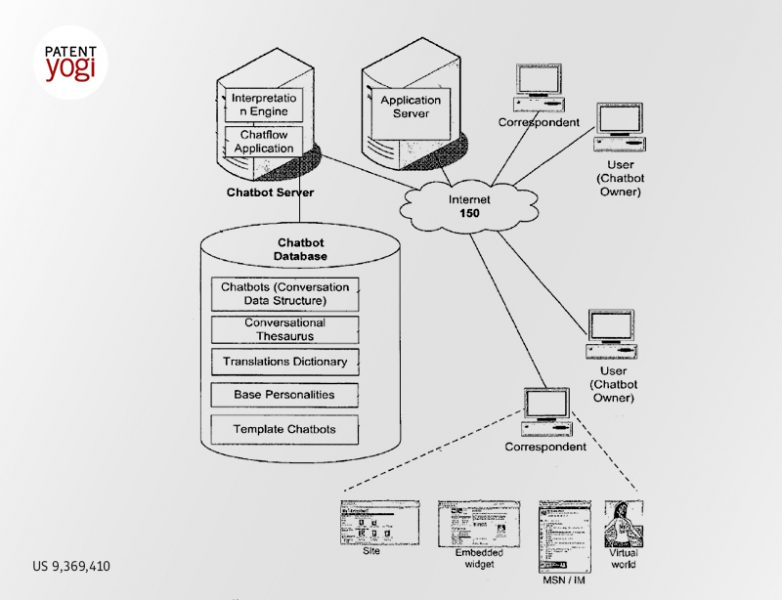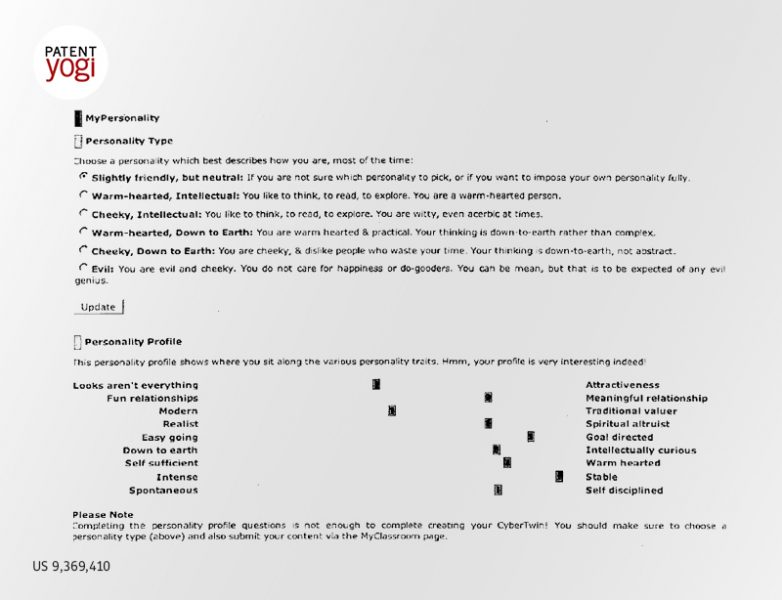Chatbots are becoming increasingly popular as an interesting and interactive medium for providing information. For example, a chatbot can replace a text based FAQ facility on a web site.
On the other hand, a chatbot provides a conversational experience for interaction with users. The user typed a question and the chatbot will attempt to interpret it, and then provide an answer. In the context of the FAQ facility, if the user submits one of the frequently asked questions using words the same as or similar to the question, typically the chatbot will provide the prepared text answer; exactly like the text-based facility but in the context of chat.
Currently, most chatbots operate in this simple mechanistic way. Also, it takes a lot of time to program chatbots. It typically takes months of programming and a lot of money for a user to create a workable chatbot.

The patented chatbot can customize the answers based on user’s profile. Therefore, depending on a user’s preferences, psychological profile and learning style, the interface representing the chatbot can be automatically customised. This includes the content to be delivered; the layout and presentation of the information to be delivered; the format of the information, such as using images, webpages, and multimedia files, a response to the user in the form of a robot action, and the source of information. For example, the chatbot can customise the language style of the information presented, the level of detail given, automatically loading webpages or providing a link for the user to click, including multimedia information, presenting the information in 2D or 3D form, etc.
The chatbot accessrd existing customer management systems to draw information about a user, such as their name, their history with an organisation (such as applying for a home loan or booking a airplane flight), etc, and use this information within the conversation to establish rapport with the user and to provide detailed information about the user’s personal situation (such as account balance, frequent flyer point balance, loan approval status, etc).
The chatbot also tailors the layout and presentation of the content to be delivered to the user in a number of different ways. The chatbot draws on an existing database of information about the user, including their expressed wishes regarding content delivery and information about their preferences inferred from their behaviour during conversations. For example, some users may prefer information delivered graphically rather than verbally; some users may prefer verbal information to be presented in point form rather than complete sentences; some users may be prefer a lot of detail rather than less detail.
The direction a conversation takes depends on the structure and design of the conversation data structure. Typically a conversation path will navigate through a series of nodes which may involve, at respective nodes, matching the user’s input message, performing an action, reporting information to the user, and then waiting for further input.
Often, in a conversation with a chatbot, a person will encounter a segment in the conversation where the chatbot does not understand what they said. The system includes an automated facility for handling this situation to extract the correct and matching response from the user and moving the conversation on the next point.
The patented chatbot functions with more human-like intelligence. The chatbot offers way to tailor the information to suit the user, and provides a mechanism for dynamically responding to in-depth information about users’ behaviour, intentions and interests and other profile characteristics. The chatbot further provides mechanisms that enable the tailoring of the chatbot’s responses depending on information gathered about the user, so that the conversation is highly personalised.
Publication number: US 9,369,410
Patent Title: Chatbots
Publication date: 14 June 2016
Filing date: 7 Jan 2014
Inventors: Liesl Jane Capper; Glenys Anne Westwood McLaughlin;
Applicant: International Business Machines Corporation

